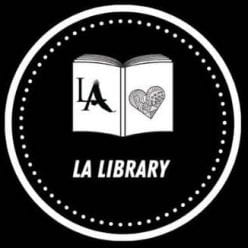Somnath Sarkar writes in “Romance in Literature: Definition, Examples Characteristics” about the changes in the genre of romance over the years. He defines romance as “Any tale of adventure, whatever the origin of its matter, could be a Romance, and the adventure could be chivalric or merely amorous.” The article states that the purpose of a romance is to be “…an escape from realism.” Meaning, according to Sarkar, that in the old style romance novels, “The sexual love, if any, is but the rarefied expression of courtly love.” The story was about the adventure the characters went on that may have lead to love and may not have. The point of the genre was not to create a toxic love between broken people, but a world that allowed readers to escape through the characters to a better place.
Prior to the 21st century a romance novel meant something other than it does now. The changing definitions of genres are of little consequence. The problem lies in the types of relationships portrayed, specifically unhealthy ones, in modern romance. In American society we romanticize things that have no business being romanticized, in large part as a mechanism for healing. For example, traumatic events or mental health problems. This feeds into modern day romance which causes problem for the young people reading YA as we are easily influenced before our prefrontal cortex is full developed as 25, at the earliest.
An example of a beloved romance YA novel is Twilight. However, Edward clearly displays abusive behavior both stalking Bella and attempting to control her by isolating her from her support system. He also threatens to kill himself if anything happens to her and frequently scares by driving too fast or abandoning her in the woods after breaking up with her.
Another example of an unhealthy relationship in YA is Katniss, Peeta, and Gale’s love triangle in The Hunger Games. Gale and Peeta have a conversation in The Mockingjay where they acknowledge that they both love Katniss and they don’t know which one of them she will pick, but they agree it will be the one she can’t live without. Katniss and Peeta’s PTSD is explored thought the series and is used to show how the games have broken them and Katniss in particular. Katniss regularly uses both Gale and Peeta for her own benefit and casts them off when no longer useful. Peeta is cast off after the first games, then Gale before the second. This cycle continues until the epilogue were the readers are still in the dark over which man Katniss choose. The Hunger Games popularity caused for the same cycle as Twilight‘s popularity. More and more copycats.
The problem with Twilight besides the toxic relationships, is that it set the precedent for all of the copycats to create their own unhealthy relationships in order to benefit from the popularity of Twilight. This cycle has to be broken. Books are influential and they need to unhealthy relationships, but not in a way that romanticizes or allows the reader to think such relationships are okay. Writing about unhealthy relationships sells books but people take these relationships out of context and assume that is how real relationships work.
Works Cited
Sarkar, Somnath, “Romance in Literature: Definition, Examples Characteristics.” All About English Literature, 9 May 2022, https://www.eng-literature.com/2022/05/romance-literature-definition-examples-characteristics.html.

